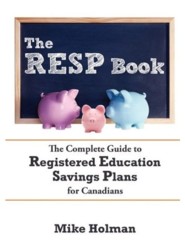I recently got a question on my addition resp grant post from Donna – she brings up a number of interesting points which I’d like to address. If you want to read any other posts on resp then check out the main resp reference page.

This was her question:
Hello. I have 3 children, 15, turning 17 and an 18 year old.
I am divorced and we had to liquify our RESP 12 years ago.
Since then their father had passed and left a little insurance money.
Is there anything that would be worthwhile in investing into the
RESP now and can it be backdated?? Any suggestions?
Looks like all 3 will be going to post secondary…2 university for
sure.
Help!
Investment time horizon
First point (and most important point) is the concept of investing time horizon. If you are investing money that you need in a couple of years then you have to invest in something that is not risky in order to ensure the money will be there when you need it. In Donna’s case I would just put the money in a high interest savings account or short term bonds (via etf or index fund) since her youngest will be going to school in 2 or 3 years.
Buy The RESP Book on Amazon now!
RESP contribution rules and catchup rules
The two main benefits of resps are the government grant (20% of contributions) and the tax-sheltered status. Let’s look at the possibilities for each of her kids:
18 year old
The last year the resp contribution grant can be paid is in the year the beneficiary turns 17. If you set up an resp for the 18 year old then the main benefit of government grants won’t be available. The tax sheltering might still be useful but only in certain cases. If you are in a high tax bracket (ie 40%+) and will be contributing a significant sum of money – let’s say $10k. Then you will be saving roughly $120 taxes per year (assume 40% rate on 3% interest). The interest portion of the account will be taxable in the child’s hand when withdrawn but as long as they are in a lower tax bracket then you will save some tax money. This benefit is pretty debatable – all it takes is one good summer job and the tax benefit mostly disappears. I’m not sure that I would bother with an resp for the 18 year old especially if the money is going to be used in the next year or two.
Turning 17 year old
By the description “turning 17” I’m assuming the child is turning 17 in 2009. There are special rules for 16 and 17 year olds with respect to the government grants which mean that this child won’t qualify.
The rules are as follows:
RESPs for beneficiaries aged 16 and 17 will be eligible for RESP grants only if at least one of the following conditions is met:
- At least $2,000 must have been contributed to an RESP for the beneficiary before the end of the calendar year the beneficiary turned 15 and not withdrawn.
- At least $100 must have been contributed to an RESP for the beneficiary in each of any four years before the end of the calendar year that the beneficiary turned 15 and not withdrawn.
From the comment it appears that all the previous resp contributions were withdrawn which makes this child ineligible for any grants. My previous comment about tax sheltering for the 18 year old are still valid for this child.
15 year old
Finally some good news – the 15 year old is eligible for the 20% government grant for this year and the next two years – but only if $2000 is contributed this year (see above rule). Donna asked about “backdating” the contributions – the resp rules allow you to receive up to $500 of grants per year for past years in addition to the yearly maximum of $500 in grants for the current year contribution.
Put simply, Donna can contribute $5,000 for the 15 year old in 2009 and will receive $1,000 in grants. Then she can do the same in 2010 and 2011 – at that time she will have made $15,000 in contributions and received $3,000 in grants which is well worth the effort of setting up the account. In this case the tax sheltering effects are even more beneficial than for the older kids.
If she doesn’t want to contribute the maximum then I would suggest contributing a minimum of $2,000 this year otherwise this will be the last year the child will be eligible for grants.
Additional CESG grants
Donna didn’t say anything about income but if your family income is below around $78k then you might be eligible for additional resp grants which could mean grants of 30% or even 40% instead of the basic CESG rate of 20%. This of course would mean more grant money for the 15 year old.
Summary
If I were in Donna’s shoes I would make sure first and foremost that I didn’t invest in anything with any risk at all (resp or not) – there just isn’t very much time until this educational money is needed. Secondly, I would definitely open an resp for the 15 year old because there is a lot of potential grant money available. I don’t know if it’s worthwhile opening resps for the other 2 depending on other factors discussed. The 15 year old is the only one who will have a clear benefit from an RESP from the information given. I would also find out if she was eligible for any extra grants.